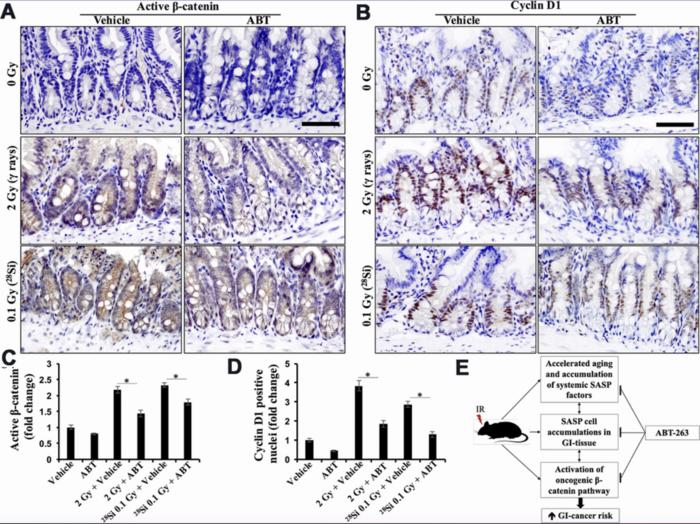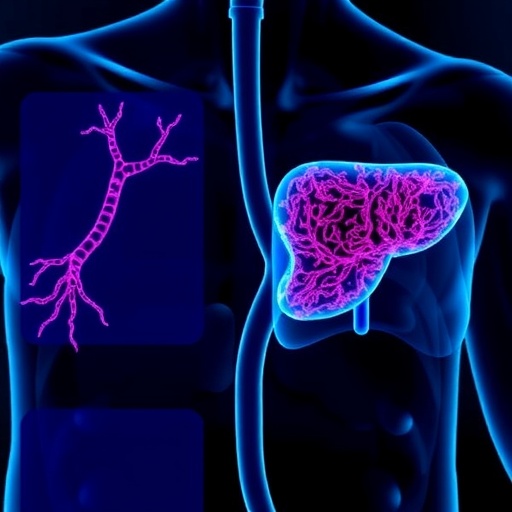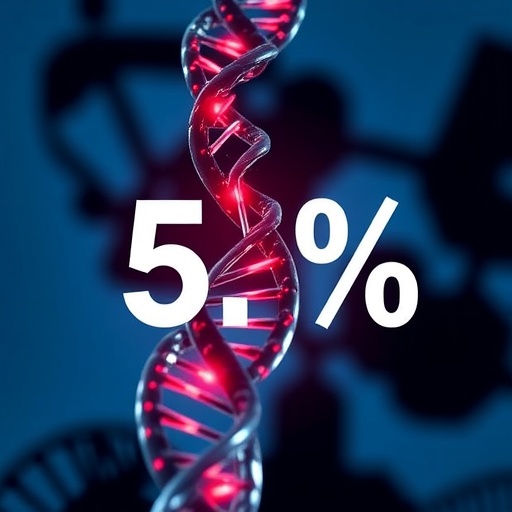Recent studies at Georgetown University Medical Center have shown promising results regarding the use of the senolytic agent ABT-263 in mitigating the onset of gastrointestinal (GI) cancer brought on by radiation exposure. This innovative research taps into the significant issue of radiation-induced damages, which have major implications for various populations, including cancer patients undergoing radiation therapy and astronauts who are exposed to cosmic radiation. The findings suggest a possible new avenue for treatment aimed at preventing the development of GI cancers, a debilitating consequence following radiation exposure.
At its core, this research is a response to the cellular risks posed by radiation-induced damage. Cellular senescence plays a vital role in this process, where damaged cells cease to divide, yet remain metabolically active by releasing pro-inflammatory factors—these factors promote an environment conducive to tumor growth. ABT-263, a drug initially designed for treating cancer, has emerged as a potential therapeutic strategy to remove these harmful senescent cells from the body, offering a refreshing approach to cancer prevention.
Radiation exposure, whether from medical treatments or environmental sources, can instigate multifaceted biological responses in the body. In particular, the damaging effects of radiation result in increased cellular damage and inflammation, which in turn heightens the risk for developing GI cancers. The researchers in this study posed a critical question: Could ABT-263 be effective in reducing the carcinogenic effects of radiation specifically within a mouse model predisposed to GI cancer?
Through experimental exposure of mice to radiation, researchers observed a marked increase in the presence of senescent cells in the intestinal tract. These senescent cells are notorious for fostering an inflammatory environment, which is a precursor to tumor formation. However, following the administration of ABT-263, a significant reduction in the quantity of these deleterious cells was noted, correlating with a decrease in tumor formation. This pivotal discovery sets the groundwork for further exploration into the drug’s preventive capabilities.
The study also delved into inflammation pathways, emphasizing that ABT-263 reduces inflammation by interfering with the signaling processes that typically support tumor growth. The research team quantified their findings using biomarker assays, particularly observing levels of active β-catenin – a key regulator associated with cancer progression. This quantification revealed encouraging results, suggesting that the compound effectively dampens oncogenic signaling pathways in the context of radiation-induced gastrointestinal challenges.
Moreover, the implications of these findings extend beyond merely understanding cellular biology; they create exciting prospects for therapeutic applications in real-world settings. Treatments that incorporate senolytic strategies such as ABT-263 could provide a dual benefit—limiting both the risk of cancer post-radiation exposure and addressing the cellular aging phenomenon that exacerbates health issues in elderly populations.
However, it is imperative to consider the known side effects associated with ABT-263, such as thrombocytopenia, which can severely affect platelet counts and the body’s ability to manage blood clotting—a crucial aspect to monitor in therapeutic applications. As such, future studies are anticipated to focus on refining the drug’s administration protocols. This could involve optimizing dosages and exploring combination therapies that may harness the anti-cancer benefits of ABT-263 while mitigating its adverse effects.
The momentum gathered from this study has potential implications for a variety of populations at risk, which includes elderly patients who might be undergoing radiation treatments for age-related cancers. The research indicates that strategies targeting senescent cells could provide an innovative protective measure for these vulnerable groups.
In addition, the findings may resonate with healthcare professionals, as the knowledge gained from the patterns of resistance and cellular responses can inform treatment plans for cancer patients, particularly those receiving radiation therapy. The hope is that senolytic therapies may enhance the quality of life for these individuals, offsetting some of the side effects associated with rigorous treatment regimens.
The future is bright for senolytic strategies, as ongoing research into drugs like ABT-263 may yield pivotal discoveries that could change how radiation-induced cancers are approached. The intersection of aging, cancer biology, and pharmacology opens the door to a new frontier in how we can combat the long-term consequences of radiation exposure.
As research teams around the globe take cues from these provocative findings, the potential for collaborative efforts will strengthen the pursuit of effective cancer interventions. The collective aim will be not just the treatment of cancer, but the prevention, bringing renewed hope for at-risk patients.
Additional studies focusing on the molecular mechanisms involved and larger clinical trials will be essential to firmly establish the applicability of these findings in humans. The integration of senolytic agents into clinical practices could herald a transformative phase in cancer prevention and treatment, particularly in contexts where oxidative stress and cellular senescence are prevalent concerns.
Ultimately, the work performed at Georgetown University provides compelling evidence that the strategic removal of senescent cells may play a crucial role in the future of cancer therapy. Harnessing the power of agents like ABT-263 not only offers proof-of-concept for improving cancer outcomes but also champions the broader narrative of aging and healthspan enhancement in clinical settings.
As the scientific community advances this promising line of inquiry, we may soon witness a significant shift in how we approach radiation-related oncology, ensuring those affected receive the best possible care moving forward.
Subject of Research: Animals
Article Title: Senolytic agent ABT-263 mitigates low- and high-LET radiation-induced gastrointestinal cancer development in Apc1638N/+ mice
News Publication Date: 8-Jan-2025
Web References: Aging Journal
References:
Image Credits: Copyright: © 2025 Kumar et al.
Keywords: aging, senolytic agent, gastrointestinal cancer, radiation exposure, senescence, inflammation, β-catenin
Tags: cancer prevention strategiescellular senescence and inflammationeffects of radiation exposure on healthGeorgetown University Medical Center researchimplications of radiation therapy in cancer patientsinnovative cancer treatmentsmechanisms of tumor growth post-radiationmitigating radiation-induced cellular damageradiation-induced gastrointestinal cancerrisks of cosmic radiation for astronautssenolytic agent ABT-263therapeutic approaches for radiation damage





